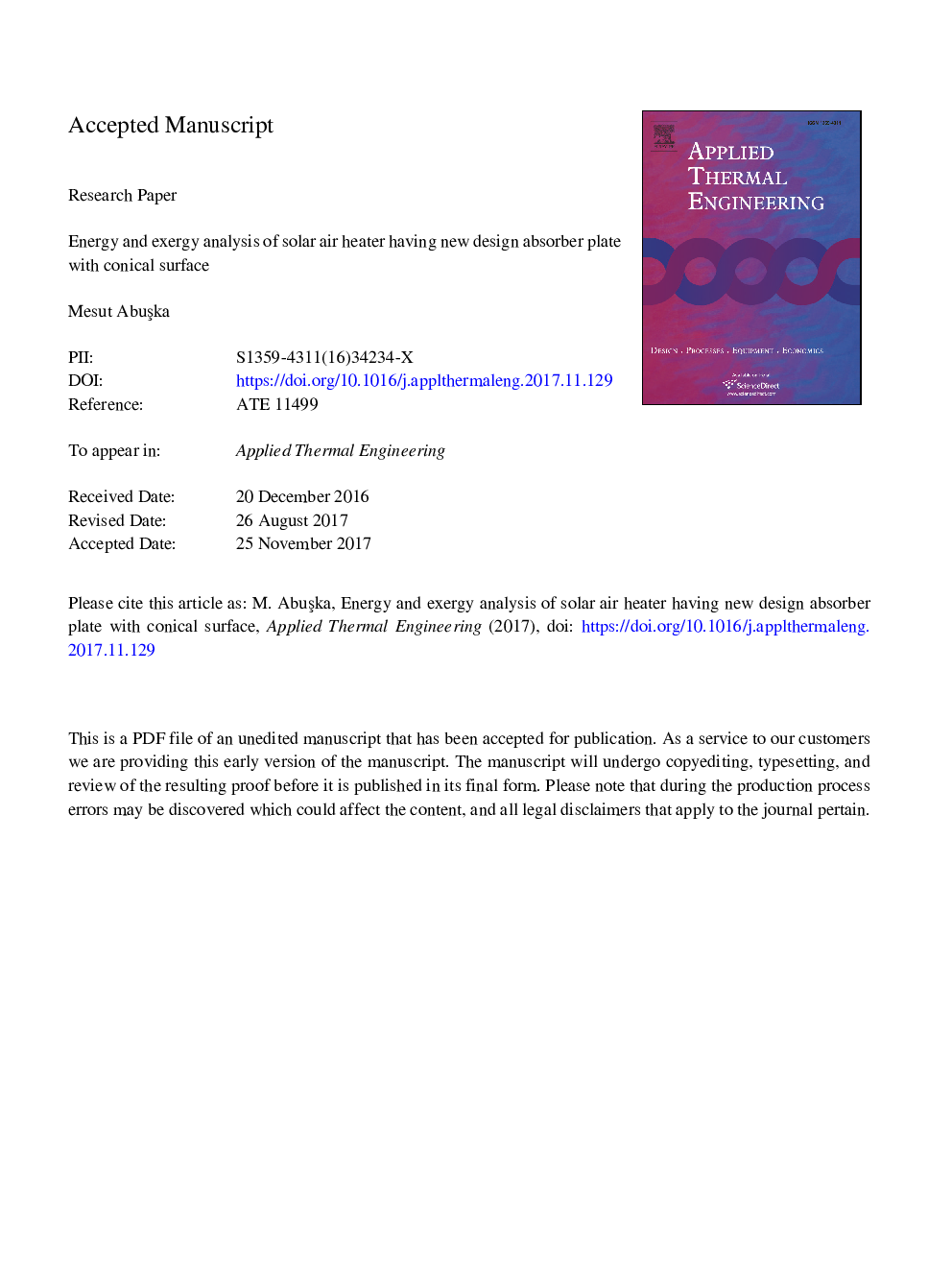| Article ID | Journal | Published Year | Pages | File Type |
|---|---|---|---|---|
| 7046156 | Applied Thermal Engineering | 2018 | 27 Pages |
Abstract
Solar air heater is used to heat air for space heating and drying process but it has low thermal efficiency because of low thermal conductivity between absorber plate and air. Artificial surface geometry is a very effective method for increasing the efficiency of air heaters. In this study, the thermal performance of a new design absorber plate with conical surface investigated and compared to flat absorber plate in single front pass conventional solar air heater. The experiments were performed for three mass flow rates of 0.04, 0.08, and 0.10â¯kg/s in outdoor conditions. The average thermal efficiency is obtained as 63.2-57.2% for 0.04, 71.5-61.7% for 0.08, and 74.6-64.0% for 0.1â¯kg/s in conical and flat absorber plate, respectively. The highest thermal efficiency was determined for the solar air heater with conical surface for all operating conditions. The average exergy efficiency is obtained as 19.3-16.1% for 0.04, 15.1-11.5% for 0.08, and 12.5-9.2% for 0.1â¯kg/s in conical and flat absorber plate, respectively. A significant increase in the thermal efficiency was obtained for conical absorber plate comparing with a flat one. The conical surface provides a smooth air flow above the absorber plate, increased surface area, and relatively less shading and decreasing the dead surface in the duct. The new design absorber plate with the conical surface can be as energy efficient option for SAHs. Moreover, the results showed that the efficiency of solar air heater mainly depends on mass flow rate, solar radiation, and surface structure of absorber plate.
Related Topics
Physical Sciences and Engineering
Chemical Engineering
Fluid Flow and Transfer Processes
Authors
Mesut AbuÅka,
